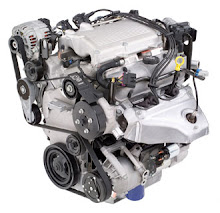
Wednesday, August 18, 2010
COTTER JOINT WITH SLEEVE
This type of cotter joint is used for connecting two rods which are subjected to axial forces. The ends of the two rods are enlarged in diameter to reduce the effect of reduction in the strength of the rods due to cutting of the slots. The enlarged ends of the rods are introduced from the opposite sides into a cylindrical sleeve to butt against each other at the mid length of the sleeve length. The slots in the rods and as well as in the sleeve are made slightly larger than. The slots in the two rods are so located with respect to the slots in the sleeve such that when assembled, there will be an offset by a small amount, called clearance, between them. This intentionally provided offset requires driving of the cotter into the slots by applying the force. As the cotter is driven, its straight side is forced against the straight faces of the slots in the sleeve, while its tapered side is forced against the tapered faces in the slots in the rods which results in the pulling of the two rods as to hold them rigidly by the friction grip. This assembly leaves clearance in the sleeve and the rods. The provision of these clearances facilitates the axial adjustments of the two connecting rods.


.jpg)




.jpg)


